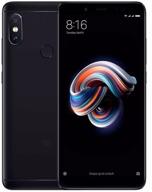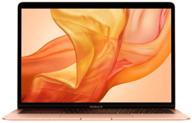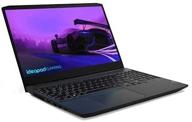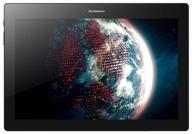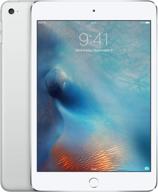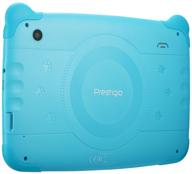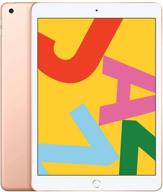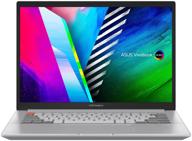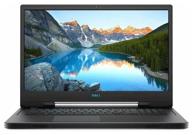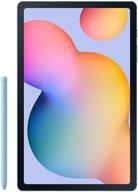
📱 Renewed Samsung Galaxy Tab S6 Lite 10.4", 64GB WiFi Tablet Angora Blue - SM-P610NZBAXAR - S Pen Included Review
12
·
Average

Media
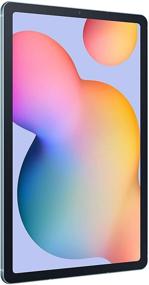

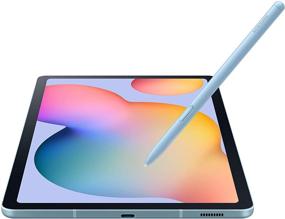

Photos by authors
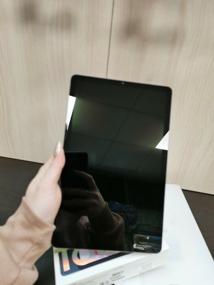
Details
| Series | Samsung Galaxy Tab S6 Lite WiFi |
|---|---|
| Brand | Samsung Electronics |
| Screen Size | 10.4 |
| Operating System | Android |
| Memory Storage Capacity | 64 GB |
Description of 📱 Renewed Samsung Galaxy Tab S6 Lite 10.4", 64GB WiFi Tablet Angora Blue - SM-P610NZBAXAR - S Pen Included
- + Sufficiently productive, according to personal measures, and a little faster than the SD 660 in typical operations (launching applications, opening tabs, etc.). The score is 10–20 percentage points higher in the benchmark; however, I did not test it in games. +Considering that it is made of metal, its strength ought to be at the top of the list. + Stylus. Simply put, making use of it is a very nice and comfortable experience. It functions only like a wand and a single button here, unlike in the Galaxy S6 and S7, however it is really easy to bring it out and start using it right away. It is interesting to note that the tablet can detect the stylus anywhere between three and five centimeters away from the screen and can sense when the button is being pressed, yet the stylus is ineffective on other types of gadgets. It can also be magnetically linked to the top panel for added convenience, where it will remain firmly in place. + Autonomy. It should be sufficient for one to two days of use in active mode. + Good sound in headphones (normally I modify the sound using an equalizer, but here everything turned out to be on top); there is an equalizer built in, and there is even sound regulation based on the individual's hearing and age! The music coming from the speakers is also very nice, with good stereo separation and audibility (they are AKG speakers, after all). + Ergonomics. It may be held with one hand, and it offers a pleasant combination of different tactile sensations.
- It hurts my eyes! I am familiar with a wide variety of panels, including AMOLED (with PWM) and TFT (IPS, TN, MVA, and others). They mention that TFT PLS has been placed in this location. And this is the first time that I've had eye strain from staring at a screen. In addition, they start to hurt within one to two minutes of turning on the tablet, and continued use might lead to pain in the head. I had thought that this would become automatic after a few days of consistent use, but even after so much time had passed, it did not. According to the notebookcheck site, ripples may be seen at low brightness, and their frequency is greater than a few kilohertz. However, my Redmi Note 7 has a frequency even lower on its IPS, but my eyes have never been sick from looking at it. Therefore, I do not really believe that this is because of PWM. -Screen. To put it bluntly, it's even cornier than IPS. When compared, the only improvement that can be seen is in terms of black and white, whereas on IPS they fare far more poorly. TFT PLS suffers a loss in this region of the spectrum, as a result, the colors are less vibrant and less saturated. Additionally, the viewing angles are rather restricted, yet the colors do not appear to be significantly distorted. -Charging on the regular unit is rather slow, taking between two and three hours. -Shell. In contrast to smarts, there is not nearly as much room for customization here. in terms of functionality on par with that of a standard Android device. -No fingerprint. Because of this, entering a password will never be comfortable, even though you have the option to be an idiot and not do so. For 23,000 dollars, not to put it here because of avarice. -Front camera positioned on the left. This is a negative aspect of the tablet because it does not have a fingerprint scanner, so you will need to enter a password every time you use it (and if the screen is horizontal, the tablet will never recognize you). Additionally, you will not be able to use it in a horizontal posture while using Zoom, Teams, or Skype.It is cumbersome to hold in one's hands due to its weight, and because it is also thin, it puts pressure on the abdomen. In addition, it is uncomfortable to carry.
- + Relatively more productive than the SD 660 in everyday chores (launching programs, opening tabs, etc.), at least based on my measurements. I didn't try it in games; the score on the benchmark is 10–20% higher. +Because it is metal, strength should be its top quality. Plus stylus. Simply put, using it is incredibly pleasurable and comfortable. It is not like in S6 or S7; it is only a wand with one button here, yet it is incredibly convenient to sketch and operate. Astonishingly, the stylus does not function on other devices even though the tablet detects it at a distance of 3 to 5 cm from the screen and feels the button being pressed. + Conveniently, it is magnetically fastened to the top panel and securely holds there. + Good sound in headphones (often I modify the sound with an equalizer, but here everything turned out to be on top); there is even sound regulation depending on the individual's hearing and age! Since the speakers are AKG, sort of, the sound quality is likewise superb, stereo, and audibility is good. plus ergonomics. It is neat in terms of tactile sensations and can be held in one hand.
- -My eyes ache! I've seen and used a lot of panels, including TFT (IPS, TN, MVA, etc.) and AMOLED (with PWM). TFT PLS, so they claim, is set up here. And, for the first time, the screen is hurting my eyes. Additionally, they hurt for roughly 1-2 minutes after you turn on the tablet, increasing the headache agony. I had hoped that this was just habit, but despite using it frequently for five days, it continued. I don't really think that this is caused by PWM because, according to the notebookcheck website, ripples are seen at low brightness and have a frequency of more than a few kilohertz; yet, despite the fact that my Redmi Note 7's IPS has an even lower frequency, no one who looked at it ever got sick. -Screen. It's more corny than IPS, I guess. They perform worse on IPS when compared, with just a gain in terms of black and white. TFT PLS falls short in the rest of the spectrum because the colors are more faded and desaturated. Although there are few viewing angles, there is little color distortion. -The ordinary unit charges rather slowly; it takes about two to three hours. -Shell. Compared to smarts, it is far less customizable here. When it comes to functionality on par with that of pure Android. None were found. As a result, entering a password will never be convenient (although you can be stupid and not establish one). Greed for not putting it here for $23,000. -Side camera towards the front. This is a drawback because there is no fingerprint reader and you must continually input a password. Additionally, if the tablet detects you sideways, you will never be able to use Zoom, Teams, or Skype on the device.It presses on the stomach due to its weight and thinness, making it uncomfortable to hold with your hands.
- Personal benchmarks show that it is sufficiently productive, clocking in at somewhat higher speeds than the SD 660 while performing common operations (e.g., opening new tabs and programs). While I did verify a 10-20% increase in the benchmark, I did not try it out in any games. +Being made of metal, its durability should be exceptional. Stylus plus. Simply put, it's a joy to use because of how nice it is. Not as advanced as the ones on the Galaxy S6 and S7, but nevertheless makes drawing and using it very simple. It's interesting that the tablet can detect the stylus's presence between 3 and 5 centimeters away from the screen and register a button press, but the stylus won't function with any other gadget. Magnets secure it to the top panel for easy access and further independence. There is a built-in adjuster and even sound regulation based on the individual hearing and age, and it will last for 1-2 days of active use. + Good sound in headphones (normally I modify the sound with an equalizer, but here everything turned out to be top). The speakers produce a high-quality stereo sound with decent volume (they are AKG-like). plus Ergonomics. It's convenient because it fits in the palm of your hand and the tactile feedback is high.
- "My eyes hurt!" I've used and seen a wide variety of AMOLED (PWM) and TFT (IPS, TN, MVA, etc.) displays. They claim to have TFT PLS installed. Furthermore, I've never experienced computer-related eye strain before. In addition, they start hurting around a minute or two after you turn on the tablet, and continued use eventually leads to a severe headache. After five days of constant use, I figured it was just habit, but no such luck. The notebookcheck site claims that ripples appear at low brightness, and that their frequency is more than a few kilohertz. However, my Redmi Note 7 has an even lower frequency on its IPS, and my eyes have never gotten sick from looking at it. -Screen. It's even more ridiculously corny than IPS, actually. Black-and-white comparisons show no improvement, while IPS scores show deterioration. TFT PLS is worse in this respect; overall, the colors are duller and less vibrant. Colors don't get too distorted even at narrow angles of vision. -The normal model's charging time is very long, at three to four hours. -Shell. It's not as flexible here as it is in terms of intelligence. In terms of features, it's on par with stock Android. This individual has no fingerprints. As a result, entering a password will be a hassle forever (even though you have the option to be foolish and not do so). Ignoring this for $23,000 is motivated by greed. -Side-mounted front camera. The lack of a fingerprint scanner and the subsequent requirement to repeatedly enter a password means that the tablet will never recognize you when you hold it horizontally, making it impractical for usage with services like ZOOM, TEAMS, and SKYPE while lying down.It's cumbersome to carry around in your hands because of how hefty it is, and it presses on the stomach because of how thin it is.
- + Sufficiently productive, according to personal measurements, a little faster than the SD 660 in ordinary tasks (launching applications, opening tabs, etc. ). In the benchmark, the score is 10-20% higher, I did not test it in games. +Made of metal, so its strength should be on top. + Stylus. It's just very comfortable and pleasant to use. It is here purely like a wand + one button, not like in S6 / S7, but it is extremely convenient to draw and just use it. Interestingly, the tablet sees the stylus at a distance of 3-5 cm from the screen and feels the button being pressed, but the stylus does not work on other devices. It is also conveniently attached to the top panel with magnets and holds firmly there. + Autonomy. For 1-2 days of use in active mode, it will be enough. + Good sound in headphones (usually I adjust the sound with an equalizer, but here everything turned out to be on top), there is a built-in equalizer and even sound regulation depending on the individual hearing and age! The sound from the speakers is also excellent, stereo and audibility is good (AKG, sort of, after all). + Ergonomics. It can be taken in one hand, and it is neat in terms of tactile sensations)
- -Eyes hurt! I have seen and used many screens, both AMOLED (with PWM) and TFT (IPS, TN, MVA, etc. ). They say TFT PLS is installed here. And. for the first time my eyes hurt from the screen. Moreover, they hurt almost 1-2 minutes after you turn on the tablet, further use up to pain in the head. I hoped that this was out of habit, but even after 5 days of frequent use, this did not stop. I don’t really believe that this is due to PWM, since according to the notebookcheck site, ripples are observed at low brightness, and their frequency is more than a few kilohertz, my Redmi Note 7 has a frequency even lower on its IPS, but never eyes on it didn't get sick. -Screen. Well, it's corny worse than IPS. When comparing, there is only a gain in terms of black and white - they are worse on IPS. In the rest of the spectrum, TFT PLS loses here, the colors are more faded and desaturated. The viewing angles are also small, but the colors are not distorted much. -Very slow charging on the standard unit, 2-3 hours to charge. -Shell. It is much less customizable here than in smarts. In terms of functionality at the level of pure Android. -No fingerprint. Therefore, it will always be inconvenient to enter a password (but you can stupidly not set it). For 23k not to put it here - greed. -Front camera on the side. This is a minus, because there is no fingerprint here and you constantly need to enter a password, and if the screen is horizontal, the tablet will never recognize you) And you can’t sit in ZOOM / TEAMS / SKYPE in a horizontal position with it. -It is heavy, it is inconvenient to hold it with your hands because of this, it also presses on the stomach, since it is also thin.
- With the included S Pen, it's easier than ever to write notes and personalize photos and videos—all without charging. The S Pen attaches to your tablet with magnets, so you can quickly put it down and pick it up again without losing it.
- Not bad
- Long-life battery. The long-lasting battery lets you stream for up to 13 hours on a single charge (Battery power consumption varies with usage. Results may vary). The fast-charging USB-C port lets you quickly get back to where you left off when you need to charge.
- Some bugs
- Slim Metal Design Case: take this thin and light tablet with you wherever you go. Its sleek design fits perfectly in your pocket and comes in stylish colors of your choice.
- Weak Set







